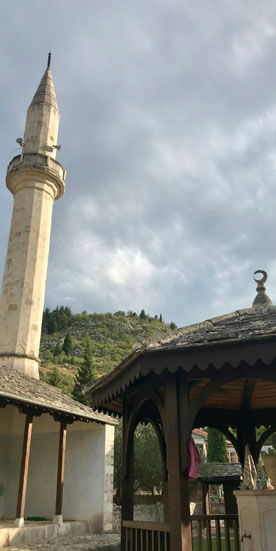Reclaiming Continuity: Lessons from the Recovery of Living Heritage in Postwar Bosnia and Herzegovina Die Wiedergewinnung der Kontinuität: Lehren aus der Wiederherstellung des ,Living Heritage' in Bosnien und Herzegowina nach dem Krieg
Katelyn Williams M.A.
Betreuer: Prof. em. Dr. Leo Schmidt

The conflict that ravaged Bosnia and Herzegovina from 1992 to 1995 proved to be one of the most devastating to cultural and sacral heritage since the Second World War, with approximately 3000 listed sites suffering extensive damage or complete destruction. Much has since been written about the protection of cultural property during periods of conflict, as well as the legal ramifications of the deliberate destruction of heritage sites, but less attention has been paid to heritage recovery in the post-conflict period. While cultural heritage is often linked with social and economic revitalization in project proposals, there has yet to be a deep evaluation of the actual effects of such projects on the sites or on the Bosnian communities in which they took place.
The central aim of the research is thus to gain an understanding of the strengths, weaknesses, and medium-term results of heritage recovery in post-conflict Bosnia and Herzegovina. Through a review of existing literature and primary and secondary documents, the research first aims to provide the historical background and context for heritage destruction during and recovery following the 1992-95 conflict. It then explores the different approaches to heritage recovery in the country by taking an in-depth look at three projects, all of which professed social rehabilitation as one of their central goals. The projects will be assessed through the lens of ICCROM’s Living Heritage Approach, which places central importance on the concept of ‘continuity’, specifically the continuity (or, in the case of a post-conflict setting, revitalization) of the use of, association with, and sustainable care for a heritage site by a core community.
Katelyn Williams is an associated doctoral student at the DFG Research Training Group 1913 "Cultural and Technological Significance of Historic Buildings".
